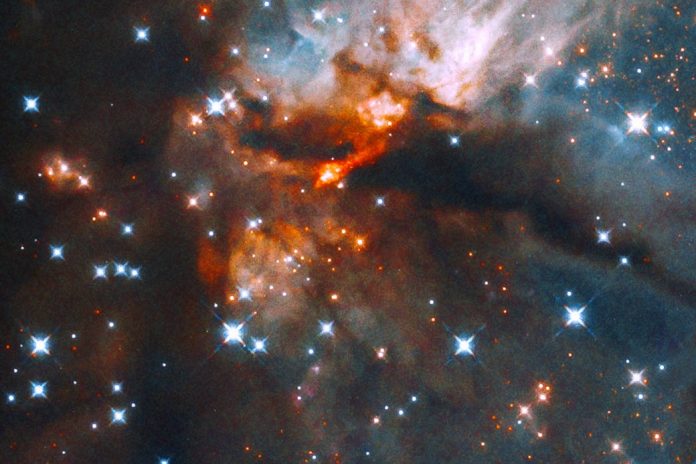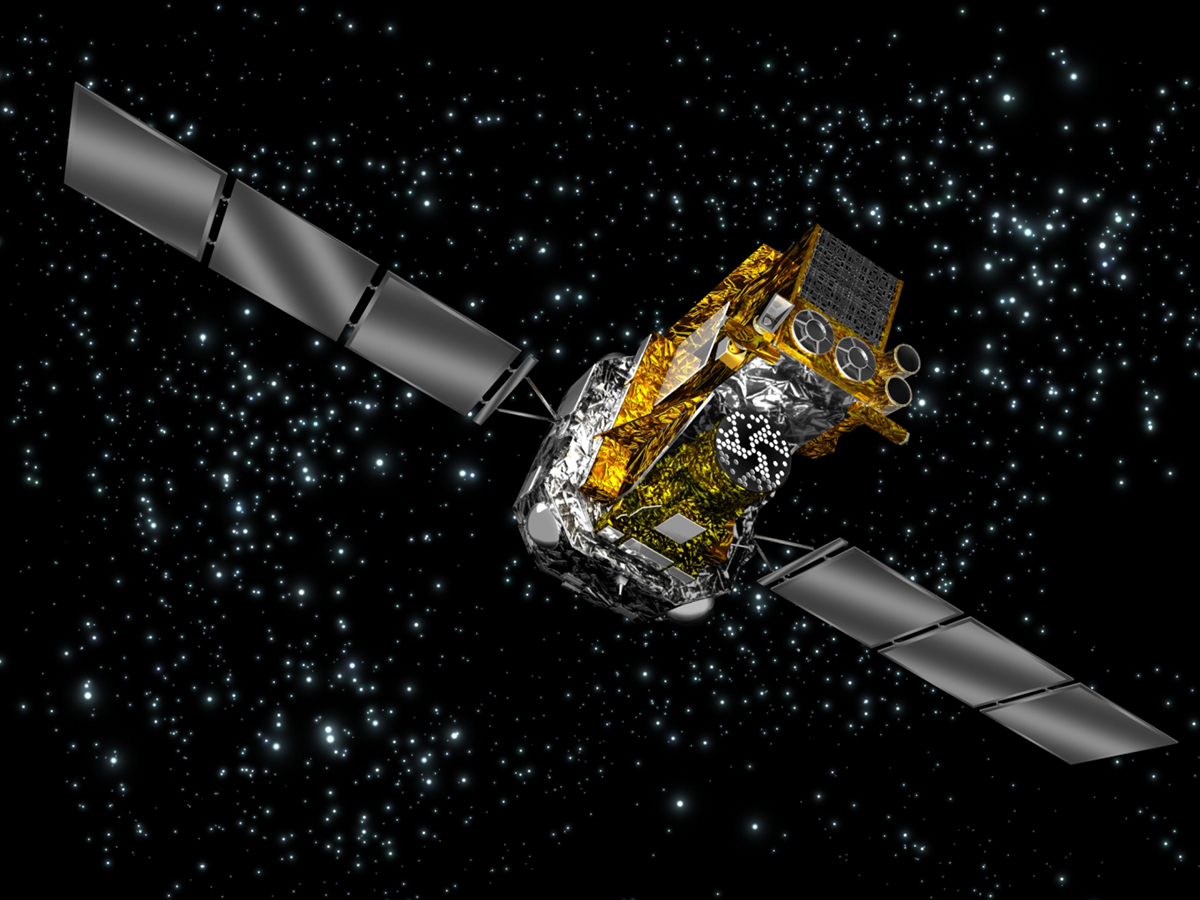
Maria Lugaro and Marco Pignatari, Senior Researchers at the Research Centre for Astronomy and Earth Sciences examine radioactive isotopes from stars, from the archaeology of solar system material to modern supernovae
In August 2019, a significant amount of the radioactive isotope 60Fe was discovered in Antarctic snow (Koll et al. 2019). 60Fe has a half-life of 2.6 million years, therefore the observed 60Fe was made “recently”, at the same time as the first human ancestors were appearing in Africa, or possibly even later. To make 60Fe, two sequential neutron capture nuclear reactions need to happen, starting from the Fe stable isotope 58Fe.
Here is the conundrum: these nuclear reactions can only happen in stars during their advanced evolutionary stages, e.g., in supernovae. Therefore, the 60Fe in the Antarctic snow was recently made in some stars, then was ejected and made its way in the interstellar medium, in the solar system and finally into the Earth’s atmosphere. 60Fe is only one of the many radioactive isotopes that are made in stars and their signature can be directly observed, providing fundamental information about their parent stars or about the environment where they are found.
Observable radioactive isotopes can be divided into three main groups. Long-lived radioactive isotopes like 40K and 238U have half-lives in the order of one billion years or longer. Radioactive isotopes with a half-life in the order of 1-100 million years like 60Fe and 26Al are called short-lived radioactive isotopes (SLRs). Finally, there are radioactive isotopes with a much lower half-life than one million years but that can also be observed in stellar objects. From this last group the most famous cases are 56Ni and 44Ti (decaying with half-lives of six days and 60 years to 56Co and 44Sc, respectively), which also have a crucial role in powering the light curves of supernovae (Seitenzahl et al. 2014).
Relics from the early solar system
Thanks to the analysis of meteoritic inclusions, it is possible to identify the relics of the presence of many radionuclides of the SLRs group alive in the early solar system (Lugaro et al. 2018). Among other light isotopes the presence of the extinct radioactive isotopes 26Al, 36Cl and 41Ca have been identified. Among isotopes heavier than iron, there are 60Fe, 146Sm and 205Pb. With a half-life of millions of years, these isotopes carry the signature of the nucleosynthesis processes that were active in stars at the time of the formation of the Sun. These might have been the same supernovae making stable nuclei and driving the enrichment of the interstellar medium, and/or a nearby, local stellar source within the star-forming region where the Sun was born. These observations can be used today to probe our understanding of the formation of the solar system and of how stars work.
At the Konkoly Observatory, a five-year project called RADIOSTAR has been funded by the ERC to study the origin of these old archaeological remains from the forming solar system (ERC CoG-2016 RADIOSTAR, Grant Agreement 724560). A team involving five post-doctoral researchers, three PhD students and two university students has been modelling nuclear reactions inside stars and the evolution of the Milky Way Galaxy. They have discovered so far that the sun should have formed in a massive star-forming region together with many other stars.

Window to study “present” stars and stellar nucleo-synthesis with radioactive isotopes
When radioactive isotopes decay, they emit photons at specific energies that travel through space at the speed of light and that can be detected from telescopes. With a half-life of 717000 years, high energy photons at 1.8MeV are the distinctive signature of decaying 26Al to the ground state of the stable isotope 26Mg that can be detected and measured by gamma-ray telescopes. Since the 26Al half-life is extremely short compared to the whole history of the Milky Way Galaxy, the observation of the 26Al distribution in the interstellar medium can be used to trace its recent production from stars. Following the first 26Al detection from the HEAO-C satellite in the late seventies, new generations of Gamma- Ray Satellites like COMPTEL (1991 – 2000) and INTEGRAL (active since 2002, see figure) allowed to map the distribution of 26Al and 60Fe emission in the interstellar medium (Diehl et al. 2021)
In 2019, more than 200 scientists submitted a white paper to make the case for a new MeV Gamma-Ray Mission to observe radioactive isotope signature from space, highlighting novel potential discoveries coming from these observations (Timmes et al. 2019).
Andrews et al. (2020) analysed what radioactive isotopes could provide information from the deepest ejecta of the supernova explosion and could be potentially detected from the next generations of gamma-ray observatories in supernova remnants. Among others, 43K, 47Ca, 44Sc, 47Sc, and 59Fe radioactive isotopes were proposed as probes of the supernova explosion energy. The alignment between theory and observations is a fundamental driver of this field of research.
Radioactive isotopes from supernova remnants can be detected at different wavelengths, not only in the gamma-ray window. For instance, 44Ti decay observation from the X-ray observatory satellite NuSTAR allowed us to map the isotope distribution in the supernova remnant CasA (Grefenstette et al. 2014). The half-life of 44Ti is ‘only’ 60 years, but the first light of CasA explosion as a supernova from a dying massive star reached Earth about 300 years ago, so the 44Ti signature is still visible today.
In conclusion, the multidisciplinary approach required to study and reveal the fundamental aspects of the production of radionuclides in stars and their observations needs open and transparent collaborations acting at different levels, since all the work cannot be done by a single scientist or institute in isolation. The acknowledgement of these needs across astronomy, nuclear astrophysics and cosmochemistry will be paramount to accelerating progress in research and driving new discoveries.
References
Andrews, S. ; Fryer, C.; Even, W.; Jones, S. ; Pignatari, M. 2020, The Astrophysical Journal, Volume 890, Issue 1, id.35, 14 (DOI: 10.3847/1538-4357/ab64f8)
Diehl, R. et al. 2021, New Astronomy Reviews, Volume 92, article id. 101608 (DOI: 10.1016/j.newar.2020.101608)
Grefenstette, B.W. et al. 2014 Nature, Volume 506, Issue 7488, pp. 339-342 (DOI: 10.1038/nature12997)
Koll, D. et al. 2019, Physical Review Letters, Volume 123, Issue 7, id.072701 (DOI: 10.1103/PhysRevLett.123.072701)
Lugaro, M. ; Ott, U. ; Kereszturi, Á., 2018, Progress in Particle and Nuclear Physics, Volume 102, (DOI: 10.1016/j.ppnp.2018.05.002)
Seitenzahl, I. R.; Timmes, F. X.; Magkotsios, G. 2014, The Astrophysical Journal, Volume 792, Issue 1, article id. 10, 7 (DOI: 10.1088/0004-637X/792/1/10)
Timmes, F. et al. 2019, Decadal Survey on Astronomy and Astrophysics, science white papers, no. 2; Bulletin of the American Astronomical Society, Vol. 51, Issue 3, id. 2 (Bibcode: 2019BAAS…51c…2T)
Please note: This is a commercial profile
© 2019. This work is licensed under CC-BY-NC-ND.










